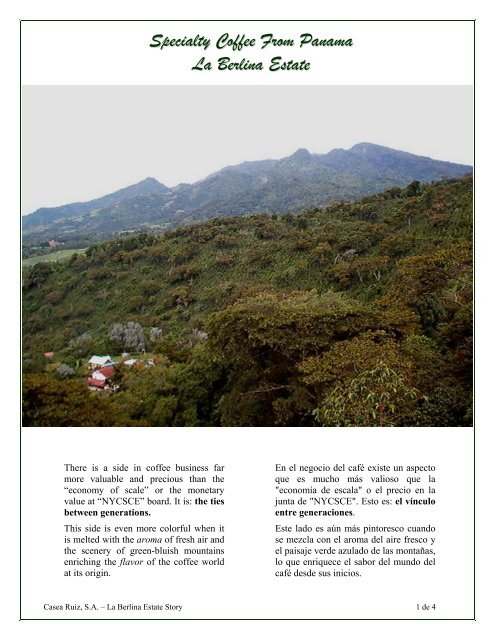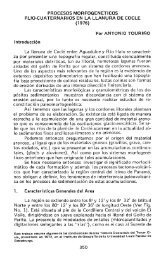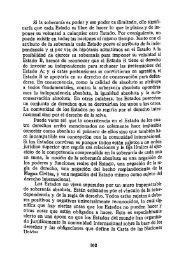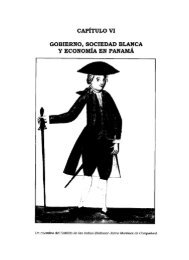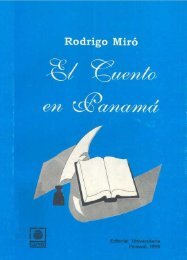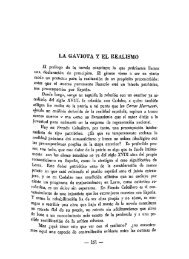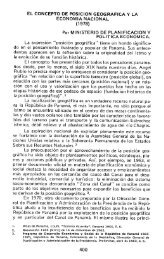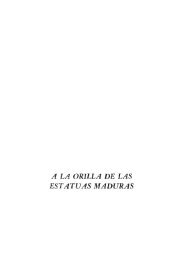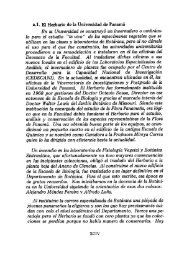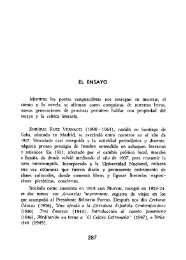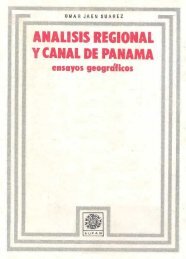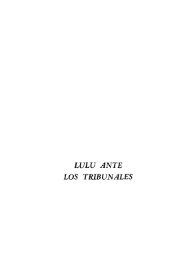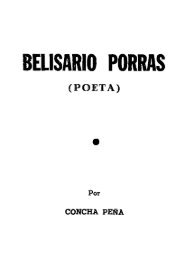Specialty Coffee From Panama La Berlina Estate
Specialty Coffee From Panama La Berlina Estate
Specialty Coffee From Panama La Berlina Estate
You also want an ePaper? Increase the reach of your titles
YUMPU automatically turns print PDFs into web optimized ePapers that Google loves.
<strong>Specialty</strong> <strong>Coffee</strong> <strong>From</strong> <strong>Panama</strong><br />
<strong>La</strong> <strong>Berlina</strong> <strong>Estate</strong><br />
There is a side in coffee business far<br />
more valuable and precious than the<br />
“economy of scale” or the monetary<br />
value at “NYCSCE” board. It is: the ties<br />
between generations.<br />
This side is even more colorful when it<br />
is melted with the aroma of fresh air and<br />
the scenery of green-bluish mountains<br />
enriching the flavor of the coffee world<br />
at its origin.<br />
En el negocio del café existe un aspecto<br />
que es mucho más valioso que la<br />
"economía de escala" o el precio en la<br />
junta de "NYCSCE". Esto es: el vínculo<br />
entre generaciones.<br />
Este lado es aún más pintoresco cuando<br />
se mezcla con el aroma del aire fresco y<br />
el paisaje verde azulado de las montañas,<br />
lo que enriquece el sabor del mundo del<br />
café desde sus inicios.<br />
Casea Ruiz, S.A. – <strong>La</strong> <strong>Berlina</strong> <strong>Estate</strong> Story 1 de 4
<strong>Specialty</strong> <strong>Coffee</strong> <strong>From</strong> <strong>Panama</strong><br />
<strong>La</strong> <strong>Berlina</strong> <strong>Estate</strong><br />
<strong>La</strong> <strong>Berlina</strong> <strong>Estate</strong> <strong>Coffee</strong> Farm was<br />
founded by Mr. Segundo Diaz, a<br />
Colombian soldier who was sent to<br />
<strong>Panama</strong> to quench the separatist upraise<br />
at the beginning of 1900s.<br />
<strong>Panama</strong> got its separation from <strong>La</strong> Gran<br />
Colombia and on peaceful terms<br />
Colombians were given the choice to go<br />
back to their land or settle in <strong>Panama</strong> on<br />
friendly terms.<br />
Mr. Diaz felt in love with Boquete and,<br />
of course, of a boquetenian girl. When<br />
his family was in a better position to<br />
work, he decided to go further higher in<br />
the mountain chain and start his own<br />
coffee plantation.<br />
There they looked for coffee seeds<br />
underneath the rain forest that at that<br />
time was growing wildly in the<br />
surroundings. “We wonder why this<br />
coffee was already there. Probably<br />
because of the “jujunas” (monkeys) that<br />
eat the coffee and drop the seeds<br />
wherever they go” remembered one of<br />
his descendants. The interesting thing is<br />
that there was plenty enough to build 80<br />
acres of “criollo trees”.<br />
This was taking place during the early<br />
1920´s, while the coffee was growing;<br />
the whole family built what we call now<br />
a perfect sustainable farm. They built a<br />
small sugar cane mill, run by a water<br />
wheel. They grew corn, had a lot of<br />
chickens and pigs. The whole Diaz<br />
family lived out of the farm. Soon the<br />
Diaz children where the coffee pickers<br />
helped by neighbors and some Ngäbe<br />
Indians that would come to the<br />
surrounding to work during the coffee<br />
harvest.<br />
<strong>La</strong> <strong>Berlina</strong> <strong>Estate</strong> <strong>Coffee</strong> Farm fue<br />
fundada por el Señor Segundo Díaz, un<br />
soldado colombiano que fue enviado a<br />
Panamá a apaciguar el movimiento<br />
separatista a principios de los 1900.<br />
Panamá consiguió su independencia, y<br />
de manera pacífica se le concedió a los<br />
colombianos la oportunidad de regresar<br />
a su tierra o establecerse en la región en<br />
términos amistosos.<br />
El Señor Díaz se enamoró de Boquete y<br />
por supuesto, de una boqueteña. Cuando<br />
su familia creció lo suficiente para<br />
trabajar, él decidió ir más arriba en la<br />
cadena montañosa y comenzar una<br />
plantación de café.<br />
Allí buscaron semillas de café bajo el<br />
bosque lluvioso que en esa época crecía<br />
silvestre en los alrededore. “Nos<br />
preguntamos por qué este café ya estaba<br />
allí. Probablemente a causa de los<br />
"jujunas" (monos) que comen café y<br />
dejan caer la semilla dondequiera que<br />
van” recuerda uno de sus<br />
desecnedientes. En ese lugar hubo<br />
suficiente semilla para plantar 80 acres<br />
de "variedad criolla".<br />
Esto ocurría a principios de los 1920.<br />
Mientras el café crecía, toda la familia<br />
trabajaba en lo que ahora llamamos una<br />
finca perfectamente sostenible. Ellos<br />
construyeron un pequeño molino de caña<br />
de azúcar, movido por una rueda<br />
hidráulica, produjeron maíz y tuvieron<br />
gran cantidad de gallinas y cerdos. Toda<br />
la familia Díaz vivió de lo que la finca<br />
produjo. Pronto sus hijos fueron los<br />
cosecheros del café, ayudados por<br />
vecinos y algunos indígenas Ngäbe que<br />
llegaron al lugar para trabajar durante la<br />
cosecha.<br />
Casea Ruiz, S.A. – <strong>La</strong> <strong>Berlina</strong> <strong>Estate</strong> Story 2 de 4
<strong>Specialty</strong> <strong>Coffee</strong> <strong>From</strong> <strong>Panama</strong><br />
<strong>La</strong> <strong>Berlina</strong> <strong>Estate</strong><br />
The water powered wheel, also became<br />
the source of energy for the coffee<br />
processing mill. The crop was stored in<br />
parchment in the specialty built attic, to<br />
take advantage of the dry conditions the<br />
sun-heated roof would create. <strong>Coffee</strong><br />
became the currency for the exchange of<br />
more luxury items like new shoes and<br />
even education. Once, when one of the<br />
older children became a teenager he dug<br />
a whole through the ceiling to the attic<br />
from where a couple of pounds where<br />
drained to be traded (sold) and use the<br />
earnings to pay his way to visit his<br />
girlfriend.<br />
By the early 1930´s <strong>La</strong> <strong>Berlina</strong> <strong>Estate</strong><br />
<strong>Coffee</strong> Farm was yielding a recognized<br />
quality coffee for the ones that drank it<br />
or had bought some of it. However, it<br />
came the time when the farm was not<br />
enough for a growing family with added<br />
members by marriage. Some of them<br />
decided to move on. Years later, coffee<br />
price drops took the toll on one of the<br />
inheritants that had kept the farm forcing<br />
him to sell his life story away along with<br />
his farm. It was Don Manuel (Mr. Diaz´<br />
son).<br />
In 1997, another cycle of negative<br />
market brought the opportunity to Casa<br />
Ruiz, S.A., to acquire this farm. It was<br />
already known by its Board of Directors,<br />
that the area as well as the coffee was<br />
excellent. By many trials, years before,<br />
Horqueta micro-region, and specially,<br />
the Typica variety had yielded a<br />
wonderful cup. It made worth the<br />
investment.<br />
<strong>La</strong> rueda hidráulica también llegó a ser<br />
el motor para la despulpadora de café.<br />
<strong>La</strong> cosecha era almacenada en<br />
pergamino en el ático, especialmente<br />
construido para tal fin, aprovechando las<br />
condiciones de secado que creaba el<br />
techo calentado por el sol. El café llegó a<br />
ser la moneda para el intercambio de<br />
otros artículos de lujo como zapatos<br />
nuevos y hasta educación. Cuando uno<br />
de los hijos mayores llegó a la<br />
adolescencia, abrió un hueco a través del<br />
cielo raso hasta el ático, de donde sacó<br />
un par de libras de café, usándolas como<br />
moneda para pagar el “taxi” que lo<br />
llevaría a visitar a su novia.<br />
A principios del 1930, <strong>La</strong> <strong>Berlina</strong> <strong>Estate</strong><br />
<strong>Coffee</strong> Farm producía un café de<br />
calidad reconocida por aquellos que lo<br />
probaron o compraron directamente de<br />
la finca. Sin embargo, con el tiempo, la<br />
finca no fue suficiente para una familia<br />
que crecía con miembros añadidos por el<br />
matrimonio. Años después, el precio<br />
bajo del café cobró su cuota a uno de los<br />
herederos que había mantenido la finca,<br />
forzándolo a vender su vida junto con<br />
ésta. Éste era Don Manuel (uno de los<br />
hijos del Señor Díaz).<br />
En 1997, otro ciclo negativo en el<br />
mercado dio a Casa Ruiz, S.A. la<br />
oportunidad de adquirir esta finca. Ya<br />
era sabido por sus directores que tanto el<br />
área como el café eran excelentes. A<br />
través de muchas pruebas realizadas año<br />
tras año, el café producido en la microregión<br />
de Horqueta y especialmente la<br />
variedad Típica de café producida allí,<br />
resultaban en una maravillosa taza. Esto<br />
hizo que la inversión valiese la pena.<br />
Casea Ruiz, S.A. – <strong>La</strong> <strong>Berlina</strong> <strong>Estate</strong> Story 3 de 4
<strong>Specialty</strong> <strong>Coffee</strong> <strong>From</strong> <strong>Panama</strong><br />
<strong>La</strong> <strong>Berlina</strong> <strong>Estate</strong><br />
In 1997 for the <strong>Panama</strong> presentation of<br />
The Taste of The Harvest at SCAA New<br />
Orleans Convention, <strong>La</strong> <strong>Berlina</strong> <strong>Estate</strong><br />
<strong>Coffee</strong> was chosen as #1 to represent<br />
<strong>Panama</strong> <strong>Coffee</strong>.<br />
In 1999, at the Philadelphia Conference,<br />
this coffee was recognized as the best<br />
coffee coming from a specific region from<br />
<strong>Panama</strong>.<br />
In February 2000, it was chosen as #1<br />
coffee at the <strong>Specialty</strong> <strong>Coffee</strong> Association<br />
of <strong>Panama</strong> Cupping Event.<br />
In June, 2000, it was also chosen #1 at the<br />
cupping panel of the Cupping Review<br />
Magazine of Kenneth Davis.<br />
<strong>La</strong> <strong>Berlina</strong> <strong>Estate</strong> <strong>Coffee</strong> is found in the <strong>Specialty</strong> Market, as an ambassador of the genuine seed that was<br />
originally planted in Boquete.<br />
En 1997, <strong>La</strong> <strong>Berlina</strong> <strong>Estate</strong> <strong>Coffee</strong> fue<br />
escogido como el #1 para representar el<br />
café de Panamá en <strong>La</strong> Prueba de la<br />
Cosecha para la Convención del SCAA de<br />
New Orleans.<br />
En 1999, éste café fue reconocido como el<br />
mejor entre las variedades presentadas de<br />
una región de Panamá en la Conferencia<br />
de Filadelfia.<br />
En febrero del 2000, fue escogido como el<br />
café #1 en el Evento de Catación de la<br />
Asociación de Cafés Especiales de<br />
Panamá.<br />
En junio del 2000, también fue escogido<br />
como el #1 en el panel de catación del<br />
Cupping Review Magazine de Kenneth<br />
Davis.<br />
<strong>La</strong> <strong>Berlina</strong> <strong>Estate</strong> <strong>Coffee</strong> está en el Mercado de Especialidades, como excelente representante de la<br />
semilla genuina que fue plantada originalmente en Boquete.<br />
Casea Ruiz, S.A. – <strong>La</strong> <strong>Berlina</strong> <strong>Estate</strong> Story 4 de 4


